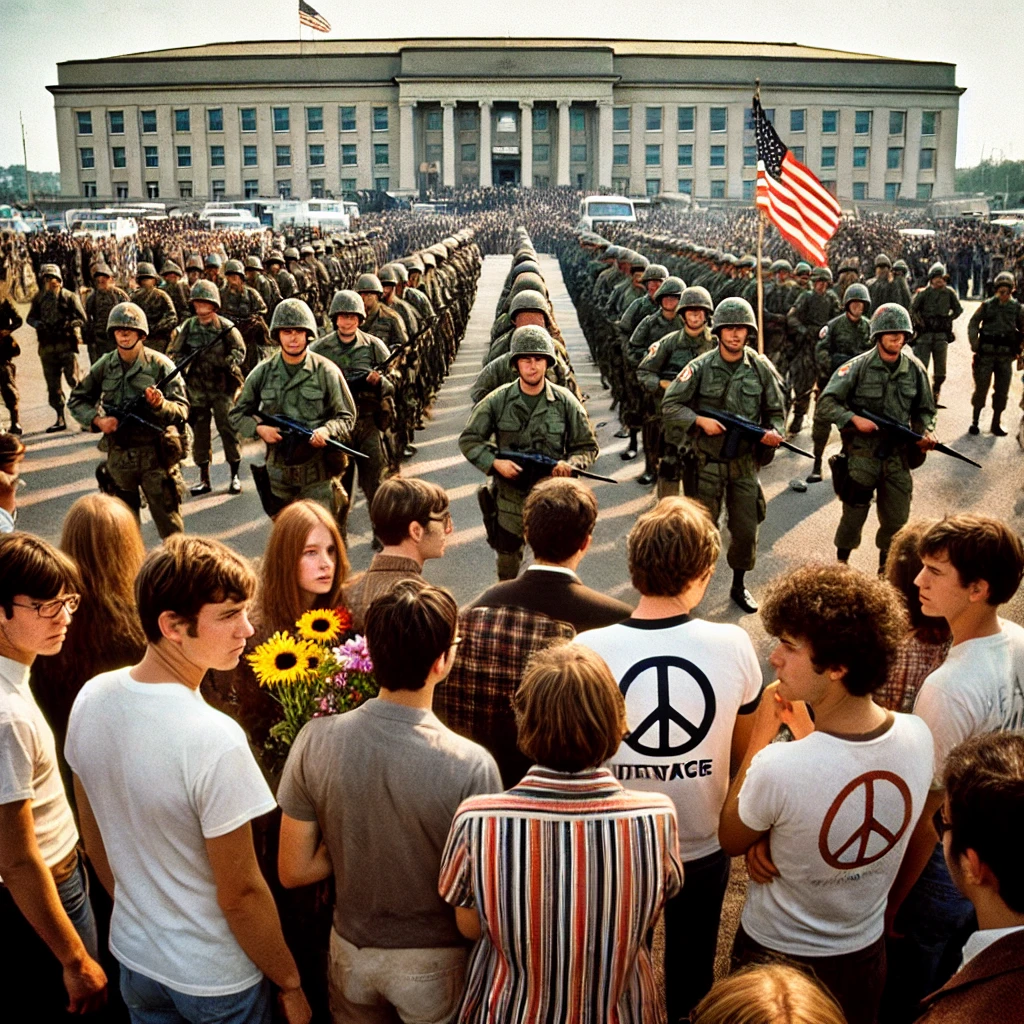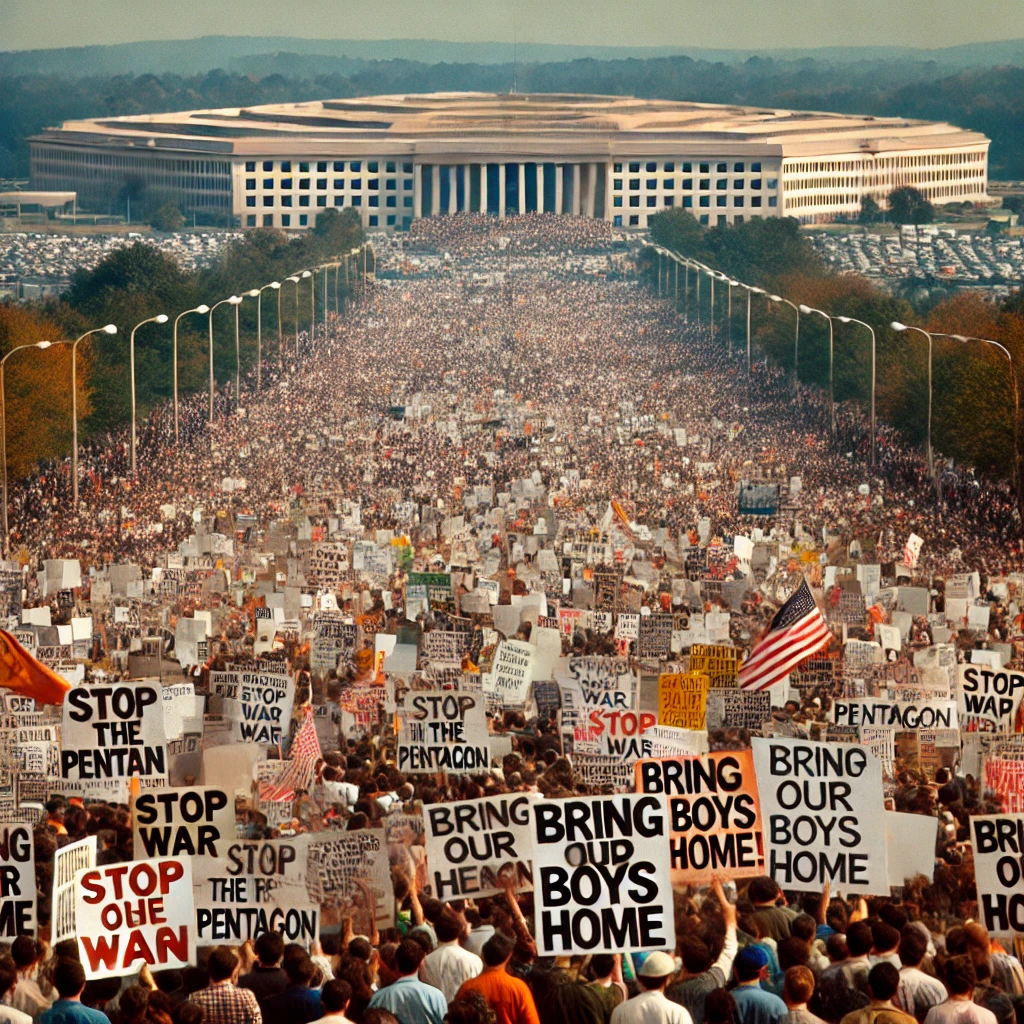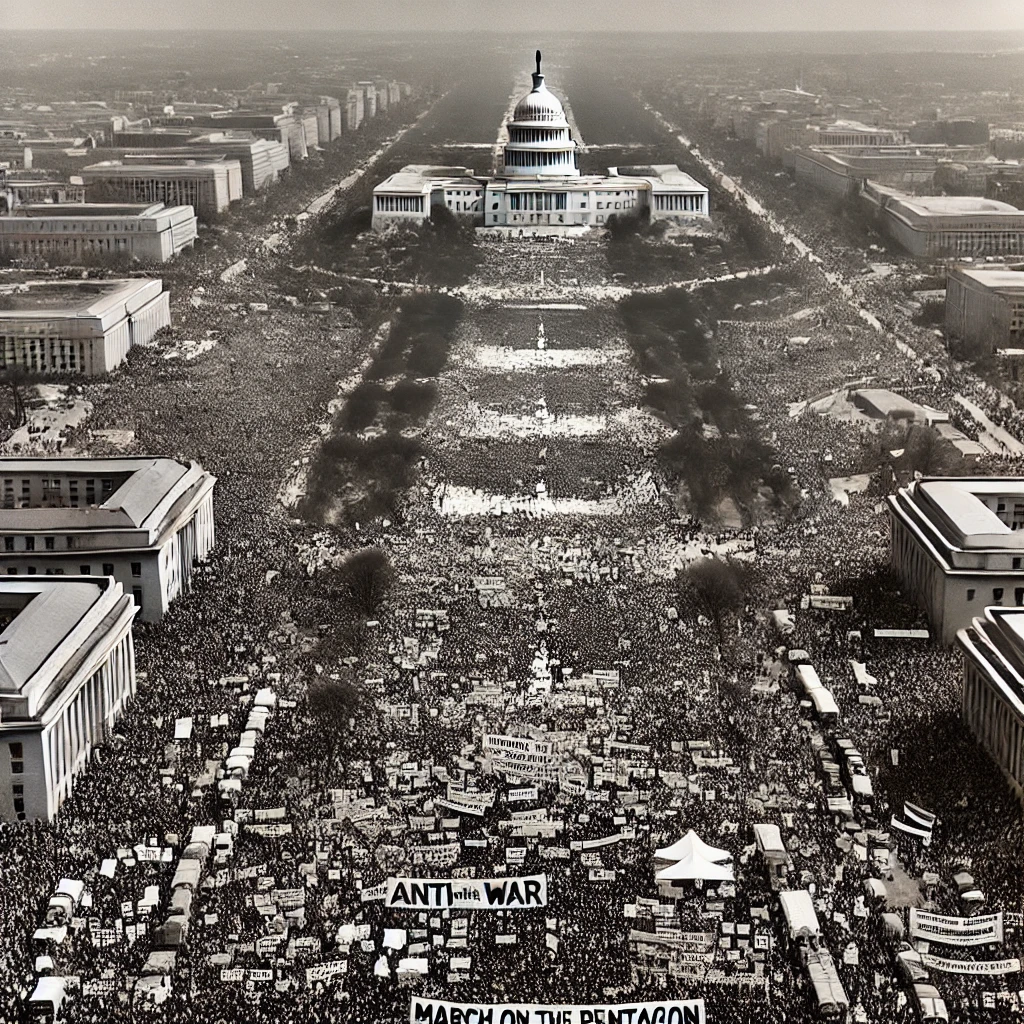On October 21, 1967, thousands of demonstrators gathered in Washington, D.C., to protest the United States’ involvement in the Vietnam War. This significant event, known as the March on the Pentagon, was one of the largest anti-war demonstrations in American history and symbolized the growing discontent with U.S. military actions in Vietnam. The protest marked a pivotal moment in the anti-war movement, reflecting widespread opposition to the conflict and the societal changes that were unfolding during the 1960s.

The Context of the Vietnam War
The Vietnam War had escalated throughout the 1960s, with increasing U.S. military involvement following the Gulf of Tonkin Resolution in 1964. As American troops were deployed and the conflict intensified, reports of casualties and the realities of warfare began to reach the home front. Public sentiment shifted as the war dragged on, with many Americans questioning the justification for U.S. involvement and the effectiveness of military strategies.
By 1967, opposition to the Vietnam War had grown significantly, fueled by graphic media coverage, anti-war literature, and the voices of influential activists. The burgeoning counterculture movement, with its emphasis on peace, civil rights, and social justice, played a crucial role in mobilizing public opinion against the war. Prominent figures, including Martin Luther King Jr. and various student organizations, began to vocalize their dissent, urging citizens to take a stand against the conflict.

The March on the Pentagon
The March on the Pentagon on October 21, 1967, was organized by a coalition of anti-war groups, including the National Mobilization Committee to End the War in Vietnam. The event drew an estimated 100,000 participants, including students, veterans, and activists from across the country. Demonstrators marched through the streets of Washington, D.C., chanting slogans and carrying signs calling for peace and an end to U.S. military intervention in Vietnam.
The march culminated in a rally outside the Pentagon, where speakers addressed the crowd, expressing their opposition to the war and their hopes for a peaceful resolution. The atmosphere was charged with emotion, as attendees shared stories of loss and the impact of the war on families and communities. The rally served as a powerful platform for voices advocating for change, emphasizing the urgency of addressing the moral and humanitarian implications of the conflict.
The Government’s Response and Media Coverage
In response to the massive turnout and the growing anti-war sentiment, the government took a defensive stance. Law enforcement agencies were deployed to manage the crowd, and tensions escalated as some protesters attempted to breach the Pentagon’s security perimeter. The confrontations between demonstrators and police highlighted the deep divisions within American society regarding the Vietnam War.

Media coverage of the protest played a critical role in shaping public perception of the anti-war movement. Television broadcasts and newspaper articles brought the sights and sounds of the demonstration into living rooms across the nation, amplifying the voices of dissent. The images of protesters clashing with authorities resonated deeply, further galvanizing the movement and inspiring other demonstrations in cities across the United States.
Lasting Impact on the Anti-War Movement
The October 21 protest marked a significant turning point in the anti-war movement, showcasing the unity and determination of those opposed to the Vietnam War. The momentum generated by the March on the Pentagon contributed to a series of subsequent protests and demonstrations throughout the late 1960s and early 1970s, as public sentiment continued to shift against the conflict.
The widespread opposition to the Vietnam War eventually influenced U.S. policy, leading to a reevaluation of military strategies and a gradual withdrawal of troops. The movement also left a lasting impact on American society, fostering a culture of activism and political engagement. The legacy of the anti-war protests can still be seen in contemporary social movements advocating for peace, justice, and human rights.
The October 21, 1967, protest against the Vietnam War represented a critical moment in American history, reflecting the growing discontent with U.S. military involvement and the desire for peace. The March on the Pentagon not only highlighted the power of collective action but also underscored the importance of civic engagement in shaping public policy. As we reflect on the events of that day, we recognize the enduring impact of the anti-war movement and its role in fostering a more informed and active citizenry committed to advocating for social change. The voices of those who protested continue to resonate today, reminding us of the power of unity in the pursuit of justice and peace.
